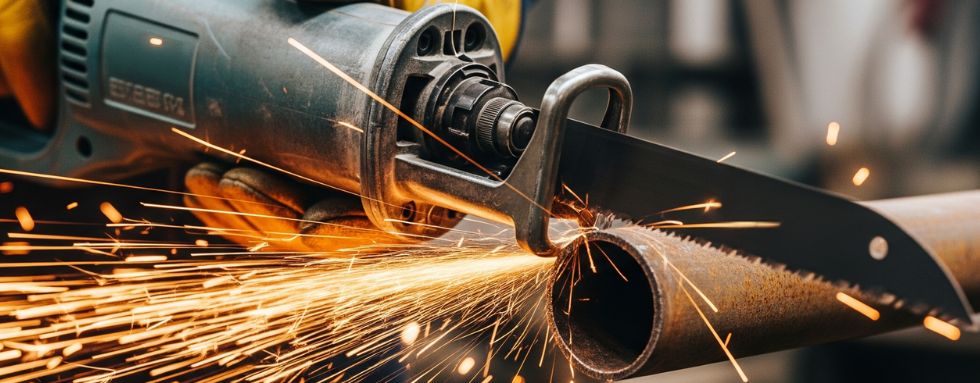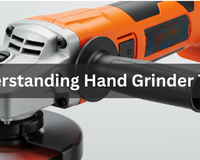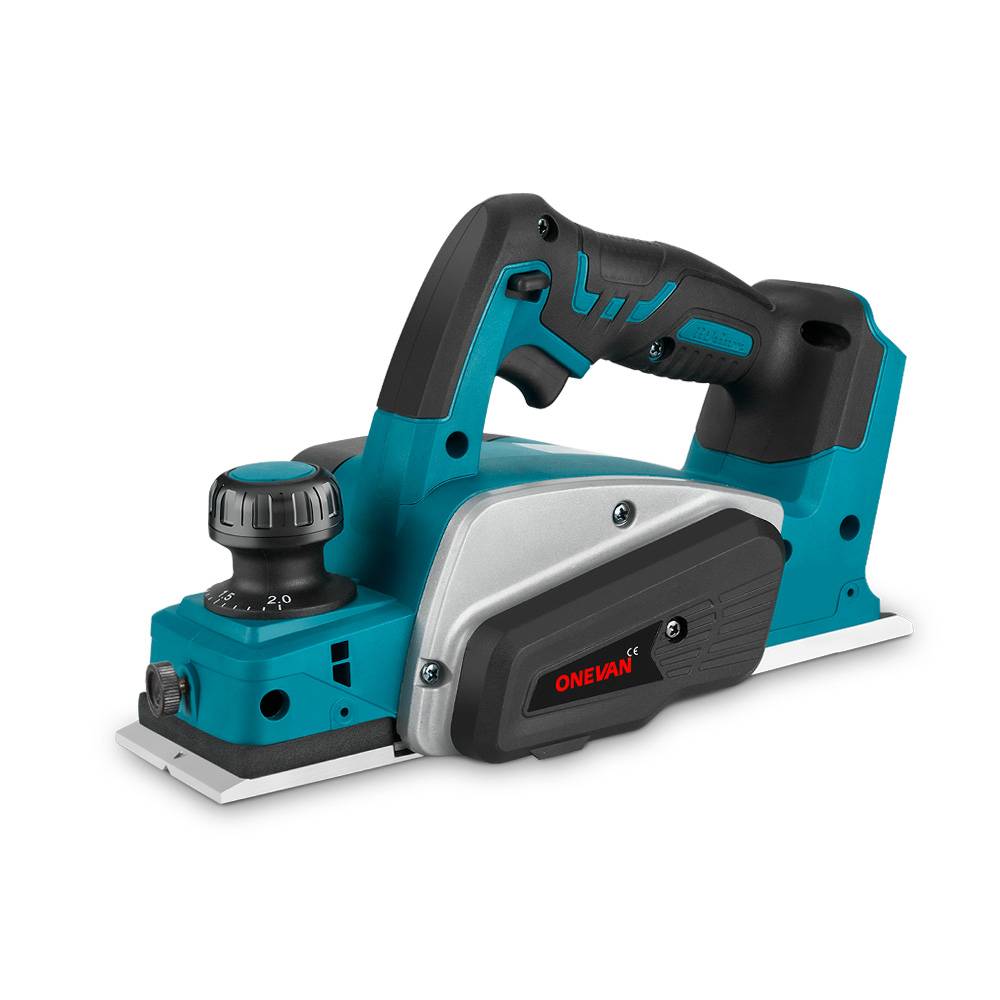Are you working on a project that requires metal cutting? It may be a rusty metal pipe or a garden fence that has been begging for an upgrade. And you’re wondering, can I cut metal with a reciprocating saw? So the answer is “Yes”. All you need is the right blade, the right motion, and a good quality reciprocating saw.
However, without complete information about your cutting tools, you risk wasting both your money and time. After reading this detailed guide, you will be well trained to use a reciprocating saw for metal cutting. Happily, with the right blade and technique, ONEVAN’s reciprocating saw can effectively cut various metal types. If you’re curious, better read till the end.
1. Can a Reciprocating Saw Cut Metal?
Why a Reciprocating Saw Can Cut Metal
When you first look at the reciprocating saw, you may think of it as an ordinary cutting tool, but what makes it powerful enough to cut metals? There is a unique system of action inside this extraordinary saw. Unlike other saws, it works on the mechanism of reciprocation (back-and-forth movement).
When you attach the metal blade at the right place and connect it with a high-intensity motor or a rechargeable lithium-Ion battery, it lunges forward and snaps backward at a speed of up to 3000 strokes per minute (SPM). With this mechanical movement, whether you cut metal pipes or fence parts, there is no distance between you and progress.
Types of Metal That Can Be Cut with a Reciprocating Saw
A reciprocating saw is a versatile tool because it can cut different types of metals effectively. Here are some metal types that can be easily cut with this saw.
Aluminum: It is a soft metal type that is used in DIYs and window frames. Using a bi-metal blade of a reciprocating saw can improve cutting efficiency, but proper technique and care are needed to prevent burns from friction and heat.
Copper: It is also a soft metal type that is used in plumbing pipes, electrical work, and decorative elements. This metal type is prone to bending, which is why a fine-tooth bimetal blade is effective for cutting.
Brass: It is a soft alloy but with a tough surface. Mostly, it's used in plumbing and hardware. To cut this metal in the best way, use a blade with TPI 18-24.
Cast Iron: Cast iron is a brittle metal type. That's why most of the contractors find it challenging to cut it finely. Using a suitable blade type, such as a carbide-tipped blade, can help in cutting cast iron, but it requires careful technique due to its brittleness.
Sheet Metal: This metal type is mostly used in roofing and HVAC systems. A blade with high TPI will work best to cut it.
Steel Pipes and Tubing: Steel pipes are denser than most metal types. You can use a bi-metal or carbide blade to cut it down in an effective way.
Limitations of Cutting Metal with a Reciprocating Saw
Due to its variety of cuts, a reciprocating saw is a versatile cutting tool. No doubt, it can easily cut pipes, bolts, and metal studs, but when it comes to heavy-duty iron beams or steel rods, the saw finds it difficult to cut. Thin metal sheets of approximately ⅛ inch and metal pipes can be cut successfully with the right blade. Thicker metal pieces of above ¼ are hard to cut.
Regarding metal types, aluminium, mild steel, and galvanized metals can be managed with a reciprocating saw. However, cutting stainless steel, cast iron, or hardened steel requires high-quality blades and careful technique, as these materials are tougher and can lead to increased wear on the tools. So keep these things in mind before using a reciprocating saw.

2. Choosing the Right Reciprocating Blade for Metal Cutting
The ability of a reciprocating saw doesn’t depend on the power of the motor, but rather on the type of blade you use. Just like a surgeon uses the right scalp for surgery, a DIYer needs the right blade to create a masterpiece of art. The wrong selection of a blade will lead to rough cuts and a wave of burnout in your nerves. Let’s understand the selection of the blade to avoid mental exertion.
Types of Reciprocating Saw Blades That Can Cut Metal
Bi-Metal Blades:
As the name suggests, bi–metal blades are made up of 2 types of steel. The front part is made up of tooth tips of High Speed Steel (HSS), and the back part is made from spring steel. This combination makes it long-lasting and enhances its cutting performance. While bi-metal blades may seem expensive upon initial purchase, their durability often justifies the investment for frequent users.
Carbide-Tipped Blades:
Carbide is a high-quality cutting material that’s popular for cutting metals and a variety of different materials. The reason for the effective working of this blade is basically the carbide itself. Carbide-tipped blades are known for their high durability and heat resistance, making them suitable for cutting hard metals. That’s why it outperforms the bi-metal blades.
High-Speed Steel (HSS) Blades:
The High-Speed Steel (HSS) blades are cost-effective and suited for cutting thin metals at high speeds. Although these blades operate at high speeds, they are brittle, making it easy to cut thin metals but not thick ones. It means HSS is not good for heavy-duty metals, so choose according to your metal type.
Blade TPI (Teeth Per Inch) for Metal Cutting
TPI means teeth per inch on a metal blade.When using a reciprocating saw, it's essential to inspect the TPI of the blade being used. Blades with higher TPI are better for thin metals. On the other hand, the blades with lower TPI are efficient for thick metal surfaces.
Always check the surface thickness of your metal before selecting the TPI of a particular blade, and consider the type of cut you want to achieve, whether rough or clean. Additionally, proper selection of TPI increases the lifespan of teeth without letting them be damaged.
Blade Length and Width for Metal Cutting
If you are uncertain about selecting the right blade, consider the following guidelines regarding blade length and width for specific cutting applications. And next time, just keep these.
|
Blade Length |
Blade Width |
Best For |
Type of Metal |
Purpose |
|
4–6 inches |
3/4 inch |
Tight spots, confined cuts |
Sheet metal, conduit |
Precise control, less vibration |
|
6–9 inches |
1 inch |
General cutting, mid-size projects |
Pipes, thin rods |
Versatile use, balance of reach and stability |
|
9–12 inches |
1 inch + |
Extended reach, demolition tasks |
Thick steel, heavy tubing |
Greater depth, more flex, ideal for deep cuts |
3. Step-by-Step Guide to Cutting Metal with a Reciprocating Saw
Reciprocating can work effectively if used in the proper way. When cutting anything with it, whether a metal pipe, a wooden part, or PVC, proper care is necessary. Here is a detailed guide on how to use it in the most efficient way possible.
Step 1: Setting Up the Saw
At first, check the blade type and ensure it is suitable for metal cutting. You can use the bi-metal blade or the carbide-tipped blade, as they are specifically designed for metal cutting. Also, make sure to check any cracks or missing teeth on the blade to prevent any miscuts.
Step 2: Preparing the Work Area
Now comes the area preparation. The number one precaution should be the metal piece fixation. If you do not tighten it firmly, it may lead to inaccurate cuts, kickbacks, or injuries. Also, keep the surrounding environment free from dust or any waste materials that can interfere with the cutting process or movement.
Step 3: Marking the Cut
Before cuts, use a marker or a measuring tape to mark the cut line. This will help you avoid any improper cuts or strains.
Step 4: Putting on Safety Gear
When cutting metal with a reciprocating saw, prioritize your safety above all else. Wear cut-resistant gloves and safety glasses to protect yourself from sharp metal pieces and flying debris. Additionally, cutting heavy metals can produce loud noise levels, which may harm your hearing, so it is essential to wear proper hearing protection, such as earmuffs. A dust mask is also recommended to protect against metal particles and debris.
Step 5: Making the Cut
Place the saw on the marked lines and ensure it remains stable on the cut area. Now turn on the motor to start the saw. Next, carefully cut your desired metal parts.
Step 6: Cutting Techniques
Straight Cuts:
To make straight cuts, keep the blade and maintain even pressure throughout the stroke.
Curved Cuts:
For curved cuts, use a blade designed for flexibility, and guide the saw slowly along the curve to maintain control and accuracy.
Plunge Cuts:
For plunge cuts, hold the saw firmly and position it at a slight angle to the marked line, gradually lowering the blade into the material.
Step 7: Finishing the Cut
To complete the cut, keep the saw in the metal until the blade exits. Avoid getting it out without completing the cuts. Now turn off the saw to let it cool down for the next work.
Step 8: Inspect the Cut
After completing the cut, analyze it carefully. If there are some rough edges, trim them for a smooth surface. Because without this action, you will end up frustrated.
Step 9: Clean Up
Now that you have completed the work, it's time to clean up the area. After cutting metal, there might be some broken pieces that can cause injury, so make sure to properly clean up. And then, store the equipment carefully.
4. Common Mistakes to Avoid When Cutting Metal with a Reciprocating Saw
1. Using the Wrong Blade
Mistake: Using inappropriate blades, such as those intended for wood or plastic, can cause metal pieces to burn out.
Solution: Always use Bi-metal blades or carbide-tipped blades to cut metals
2. Applying Excessive Force
Mistake: If you push too hard, it can cause bending, overheating, and a rough edge to the product.
Solution: Avoid excessive force and let the saw do its work properly with patience.
3. Using Incorrect Cutting Speed
Mistake: If you use an incorrect cutting speed on a reciprocating saw, it will damage the blade.
Solution: Use high speed for thin metal sheets and slow speed for thicker metal surfaces.
4. Not Securing the Metal Properly
Mistake: If the metal is not secured tightly on a firm surface, it can lead to false cuts and increase the risk of injury, as the product may tilt out of its space during cutting.
Solution: Always clamp the metal object to a stable surface or workbench before you start sawing.
5. Ignoring Safety Precautions
Mistake: Safety equipment like gloves or goggles must be used before using a reciprocating saw.
Solution: Ensure that your safety is a major concern before engaging in any cutting work.
6. Overlooking Blade Maintenance
Mistake: A dull or damaged blade can lead to increased friction and reduced cutting efficiency.
Solution: Always check the blades and replace the worn-out ones with new ones.
7. Ignoring Heat Buildup
Mistake: Prolonged use of a reciprocating saw without breaks can lead to heat buildup, potentially causing blade overheating and reduced cutting efficiency, as well as increasing the risk of injuries.
Solution: Take small breaks between cuts to let the machine and blades cool down for the next cut.
8. Trying to Cut Thick or Hard Metals in One Pass
Mistake: Sometimes, due to an overload of work or in a hurry situation at home, people try to cut thick or hard metals on one pass. This action can put stress on the machine and blade and may lead to a fault or injury.
Solution: Be patient while cutting hard and thick metal pieces to get smooth cuts. And use a step-cutting approach for this purpose.
9. Not Following Manufacturer Guidelines
Mistake: While using a new blade or a new cutting technique, you may assume that all the cutting techniques are the same, but that’s not the case. Different blades have different techniques.
Solution: Always read the manufacturer's guidelines included with the blade or tool to understand the correct usage and maintenance protocols. This will help you avoid any problems later on.

5. Applications of Cutting Metal with a Reciprocating Saw
A reciprocating saw is considered a must-have tool for constructors and DIYers due to its high-end cutting abilities. Here are some of the areas of daily life where a reciprocating saw can be used in the best way.
1. Construction and Demolition
Metal Pipe and Conduit Removal:
On construction sites and demolition sites, a reciprocating saw is used to cut metal pipes and conduct removal. Structural elements like steel studs, metal railings, and support brackets are hard to dismantle. But the reciprocating saw can handle it carefully by saving time and labour. It can also cut down metal fencing, such as chain links or steel panels, without affecting the surrounding area.
2. Plumbing and Electrical Work
Plumbers can use the reciprocating saw to cut copper, PVC, and even cast iron pipes to install a new pipe system. An electrician can also use this saw to cut the old wiring instead of complete removal, which is a hectic task. Electricians may use it for cutting through metal conduits to modify cable routing, simplifying installation or repairs.
3. Automotive and Machinery Repairs
A reciprocating saw can be used to cut exhaust systems, old bolts, and even the body parts of autos that cannot be dismantled without removing them. Moreover, this saw is very helpful in the maintenance of machinery,such as cutting the rusted old iron parts of machines.
4. Metal Fabrication and Welding
Most metal workers use a reciprocating saw to cut metal rods, pipes, and plates into the desired shape. Also, it's a handy tool for welders who want to make fine cuts on their specific welding designs.
5. DIY and Home Improvement
DIYers aim to master using old materials at home for their crafts. But when it comes to metals, they need a tool for cutting that can make their life easier. So a reciprocating saw can work in the best way possible. Also, the size of the reciprocating saw is so manageable that you can easily use it for home improvement purposes like cutting rusted iron or tough junction cuttings.
6. Emergency and Rescue Operations
In emergencies, firefighters or rescue personnel often use reciprocating saws to cut through vehicle components, enabling them to quickly reach and assist individuals trapped in accidents or burning vehicles. In this way, it can be a life-saving tool. It can also be used in collapsed buildings to remove the unusual metals that pose a threat to life.
7. Hobbyist and Artistic Metalwork
Artists and metal sculptors use this saw to cut metal tubes, rods, or pipes to convert them into expressive art pieces. Due to its small size, artists can easily handle it without being worried about professional and expensive cutting equipment.
6. Conclusion
A reciprocating saw is one of the best tools to cut metal. Due to its portable size and low weight, you can easily make cuts even in the hidden parts where other instruments cannot reach easily. But the one main thing to keep in mind is the type of blade. Use the blade according to the metal type for smooth cuts. Moreover, take care of your safety measures before using the reciprocating saw. If you want to invest in the right reciprocating saw, you should buy ONEVAN's cordless reciprocating saw. We have a lot of happy clients across the globe. Don’t hesitate to reach out for further details.
7. FAQs
Is it better to cut metal dry or with lubricant?
It depends on the type of metal being cut with the saw. In case of soft metals like aluminum, etc, there is no need for lubricants. For harder metals, a lubricant is needed for proper cuts. However, some studies suggest that the use of lubricants isn't beneficial, as they result in rougher cuts compared to dry cuts.
How do I know when to replace the reciprocating saw blade?
If you notice the saw isn't making sharp cuts or requires more pressure, it's time to change the blade. Sometimes you may notice a burning smell or increased vibration during cutting, which is also a sign to change the blade.
Is there a difference between cutting metal and wood with a cordless reciprocating saw?
Yeah, there is a difference in blade type and cutting technique for metal and wood. Wood-cutting blades for a cordless reciprocating saw have fewer TPI, while metal-cutting blades have more TPI. With the help of a cordless reciprocating saw, wood cutting is suitable for aggressive demolition tasks, whereas metal cutting requires less force and precision.
How does the battery life of a cordless reciprocating saw affect its performance when cutting metal?
The battery life of cordless reciprocating saws directly impacts their performance. As the batteries begin to decline, it results in reduced cutting speed and requires applying more pressure when cutting metal.
What are the signs that a blade is dull when cutting metal?
If the blade appears round and smooth with reduced sharpness, it indicates the blade is dull. With a dull blade, you cannot make sharp cuts, so it's a sign to replace it.









